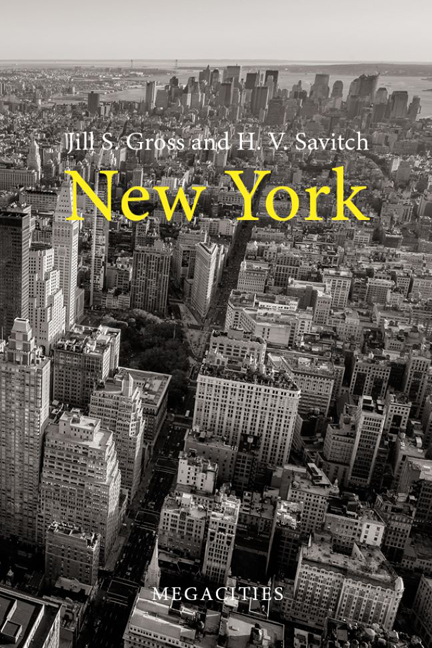Book contents
- Frontmatter
- Contents
- Preface and acknowledgements
- 1 Introduction: New York as a megacity
- 2 Crises, breakdowns and New York’s endurance
- 3 Building a global megacity: corporate- centred urban development and leadership
- 4 Expanded governance in the megacity
- 5 Neighbourhoods, diversification and gentrification in the megacity
- 6 Globalization in the megacity
- 7 Conclusions
- References
- Index
5 - Neighbourhoods, diversification and gentrification in the megacity
Published online by Cambridge University Press: 20 January 2024
- Frontmatter
- Contents
- Preface and acknowledgements
- 1 Introduction: New York as a megacity
- 2 Crises, breakdowns and New York’s endurance
- 3 Building a global megacity: corporate- centred urban development and leadership
- 4 Expanded governance in the megacity
- 5 Neighbourhoods, diversification and gentrification in the megacity
- 6 Globalization in the megacity
- 7 Conclusions
- References
- Index
Summary
New York has always been a magnet, not only for economic development, commerce and trade, but most importantly for people. Immigration and migration have fuelled growth and also helped to stabilize this diverse region during moments of instability, crisis and decline. In 2020 there were an estimated 4.95 million foreign- born residents in the region (58 per cent naturalized), 21 per cent entered the United States after 2010, and 67 per cent entered the United States after 1990 (US Census Bureau 2019, 2020a). The Great Migration between 1910 and 1970 from the south of the United States brought a 27 per cent increase in the region's black populations. Puerto Rican migration grew during the post- war period, immigration from South America came in the 1990s (NYC Mayors Office of Immigrant Affairs 2021b), and today the fastest-growing ethnic groups in the megacity are of Asian and Pacific Islander origins (NYC Mayors Office of Immigrant Affairs 2021a).
On the New Jersey side of the region, the cities of Newark, Jersey City and Elizabeth situated in the older urban areas of the gateway region are home to the largest foreign- born populations in the entire state of New Jersey. Despite ebbs and flows over time, the megacity is not only home to the largest immigrant population in the United States, but also the largest black population (Mollenkopf 2017). According to the 2020 census, the megacity was home to almost three million African- American residents (US Census Bureau 2020b). Not surprisingly, the megacity has prided itself on being a locus of diversity. While the forces of migration and immigration have been central aspects of megacity growth and diversification, public policy and private markets have been used to influence how these forces overlay onto the region's neighbour-hoods (Leibbrand et al. 2020).
Neighbourhoods have served as critical points of access for new populations, connecting people to jobs, housing, social networks and education; however, the history of neighbourhoods in the region also reveals tales of exclusion and disinvestment. As sociologists Mary Waters and Phil Kasinitz argue, “this diversity is characterized by paradoxes that emerge due to the ‘intersection of race and immigration’. It is at the neighbourhood scale, that these paradoxes are experienced” (2014: 147).
- Type
- Chapter
- Information
- New York , pp. 109 - 134Publisher: Agenda PublishingPrint publication year: 2023

